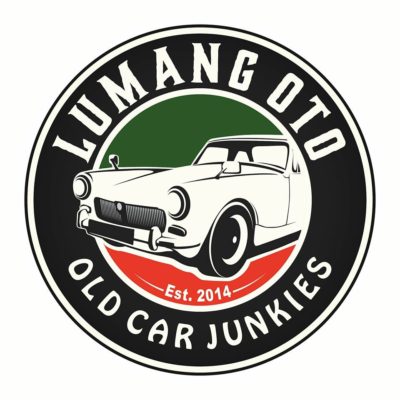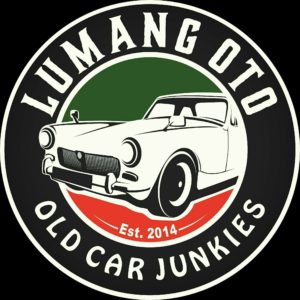Jeeps in the Philippines has always been historically important to the automotive world. For instance, the Land Cruiser was developed when the Japanese Imperial Army in 1941 found a Jeep Bantam Mark II in the Philippines, which was then taken to Japan for disassembly to be studied how it was engineered. Out of this old Jeep came the AK10, a military vehicle that was used by the Japanese Army during the World War II. After the war, when Japan is now an ally, the beloved Land Cruiser was born and its lineage can be traced back to the AK10, and ultimately, the Jeep Bantam Mark II.
The other significant importance of the Jeep was Philippines’ public utility vehicles we call the Jeepney. When World War II was over, the  American Army left a significant number of military Jeeps in the country. Harry Stonehill an American soldier was given the task to dispose of surplus military equipment from the war. World War II Military Jeeps then were eventually either given or sold to the Filipino people. With the growing demand of public utility transports, couple that with Filipino ingenuity, these military Jeeps were altered to become Philippines’ version of the minibus, the Jeepney. Jeepney is solely Filipino slang word that combines the word Jitney, which means a bus that take passengers on a fixed route without timetables, and Jeep, because it was the original make of these ex-military vehicles-turned-public transport.
American Army left a significant number of military Jeeps in the country. Harry Stonehill an American soldier was given the task to dispose of surplus military equipment from the war. World War II Military Jeeps then were eventually either given or sold to the Filipino people. With the growing demand of public utility transports, couple that with Filipino ingenuity, these military Jeeps were altered to become Philippines’ version of the minibus, the Jeepney. Jeepney is solely Filipino slang word that combines the word Jitney, which means a bus that take passengers on a fixed route without timetables, and Jeep, because it was the original make of these ex-military vehicles-turned-public transport.
 To create a distinction between public utility transports, privately-owned Jeeps were called owners. And because word usage evolves over time, just saying “owner” in the Philippines connotes these non-public utility vehicles.
To create a distinction between public utility transports, privately-owned Jeeps were called owners. And because word usage evolves over time, just saying “owner” in the Philippines connotes these non-public utility vehicles.
Although owner Jeeps started as authentic Willys (or Fords) after the World War, the growing need of personal vehicles among Filipinos resulted into building replicas and kit cars that were assembled locally. And while it is fairly inexpensive to build a kit owner Jeep, prices of its authentic ex-military Willys counterpart like any other classic vehicles have been skyrocketing thus becoming unaffordable for the average-incomed Filipinos. So for most Pinoys who wanted to drive their own private vehicles, a replica “owner” kit Jeep became their starting point entry level personal vehicle.
 As more and more Filipinos started getting involved in the car culture, owner Jeeps eventually became mainstream. And with increasing number of racing aficionados, many of these owners were turned into race machines. They were stripped down and equipped with bigger motors, taking advantage of its good power to weight ratio. Modified owners became a common sightings in drag strips and autocross events.
As more and more Filipinos started getting involved in the car culture, owner Jeeps eventually became mainstream. And with increasing number of racing aficionados, many of these owners were turned into race machines. They were stripped down and equipped with bigger motors, taking advantage of its good power to weight ratio. Modified owners became a common sightings in drag strips and autocross events.
Joel Tan is a typical Filipino car guy that started tinkering on owner Jeeps at an early age. He grew up in the Philippines but eventually migrated to the United States and works as an HVAC Technician. In his spare time, you will find Joel in his garage building award winning cars that you may one way or the other read over the pages of Super Street Magazine. Joel has been known in the car  community for his race-prepped 1971 Nissan Skyline. He also owns a multi-award-winning bright orange Sprinter Trueno TE27. However, there is always that sense of nostalgia with owner Jeeps as his passion for the automobile started when he once drove one back home. Having the “owner” concept in Joel’s mind, when a 1946 Jeep Willys CJ-2A came out on sale, he jumped in to the opportunity of acquiring it so he could finally build his “owner” Jeep, a never before done project from his side of the shore.
community for his race-prepped 1971 Nissan Skyline. He also owns a multi-award-winning bright orange Sprinter Trueno TE27. However, there is always that sense of nostalgia with owner Jeeps as his passion for the automobile started when he once drove one back home. Having the “owner” concept in Joel’s mind, when a 1946 Jeep Willys CJ-2A came out on sale, he jumped in to the opportunity of acquiring it so he could finally build his “owner” Jeep, a never before done project from his side of the shore.
As the build started, the flat head 4 motor needs to go. While stuffing in a Japanese motor to an American Jeep is nothing but a norm in the Philippines, purists would consider that almost close to blasphemy. For them, that would be a World War II Axis invasion all over again. However, stirring up the pot is a good way of making people aware of another car culture from the other side of the globe. This is just how we Pinoys do it. The engine of choice was a turbocharged Nissan SR20DET because this is the motor that would fit like a glove (so to speak). It has 610cc injectors and has been retrofitted with an intercooler from a rotary powered 72 Toyota Corolla. This Jeep has a 5-speed manual gear box hooked to an 8-bolt rear end with limited slip differential from a 1982 Toyota Corolla. The 4 wheel drive front differential also has to go, and was replaced with a Mustang II front suspension.

This Jeep sits on 14 x 8 front and 14 x 10 rear Collin Project Long Champ XR4 wheels wrapped in 165/55R14 front and 225/50R14 rear Toyo R888 tires. JEGS racing seats were added and an A K Bros Fabrication custom rollbar was bolted for safety. To complete the package, the Jeep was vinyl-wrapped with a U.S Army-themed camouflage.
After long hours of building this project with the help of a few friends, the result was this dropped to the ground gorgeous post World War II “owner-themed” civilian Jeep.
 This 1946 Willys Jeep CJ-2A has been featured in Super Street Magazine, a premiere for them because it was the first time the magazine ever had an article on an American make, unless of course you consider the Nissan motor sitting under. Joel’s Jeep has also been featured in Top Gear Philippines, and a few other car sites, and the acceptance among the tuner crowd has been overwhelming.
This 1946 Willys Jeep CJ-2A has been featured in Super Street Magazine, a premiere for them because it was the first time the magazine ever had an article on an American make, unless of course you consider the Nissan motor sitting under. Joel’s Jeep has also been featured in Top Gear Philippines, and a few other car sites, and the acceptance among the tuner crowd has been overwhelming.
However, the true test of fire for this Pinoy-built “Owner” Jeep is bringing it to an all-American hotrod Event. It was a controversial build among the traditional hotrodders, as many car guys in the U.S. are never familiar with this kind of setup. Lowering a Jeep they say, is taking away the Jeepness from a Jeep.
During the 70th anniversary of both Hot Rod Magazine and In-N-Out Burger, the 2 big names that have had strong influences with the car culture  collaborated to create the biggest hotrod show in Southern California, which was held at the Auto Club Raceway in Pomona. More than 2,500 Hot Rods, Muscle Cars and Dragsters showed up. Not a bad event to expose the “owner” Jeep to true blooded hotrod fanatics. So Joel rolled in with a few other Filipino car guys and showed off the Jeep. From the gate to the place where the Jeep was parked, the response was overwhelmingly positive. It’s a Jeep, it’s a different kind of hotrod, but a hotrod nonetheless – just with a distinct Pinoy spice.
collaborated to create the biggest hotrod show in Southern California, which was held at the Auto Club Raceway in Pomona. More than 2,500 Hot Rods, Muscle Cars and Dragsters showed up. Not a bad event to expose the “owner” Jeep to true blooded hotrod fanatics. So Joel rolled in with a few other Filipino car guys and showed off the Jeep. From the gate to the place where the Jeep was parked, the response was overwhelmingly positive. It’s a Jeep, it’s a different kind of hotrod, but a hotrod nonetheless – just with a distinct Pinoy spice.
I’ve always told Joel that it’s about time the “owner” gets its due recognition, not only from the tuner people, but also from the more traditional hotrod crowd. At the end of the day, I could confidently  say, driving the Jeep in this hotrod show has served its purpose. Non-Filipino cars guys are now aware of its existence, and I wouldn’t be surprised if I get to see more of these kind of builds in the near future. I guess it gives a lot of people the realization that there is more to hot rodding than what is predictable. Thanks to Joel for this cool build and thanks for bridging the gap between hotroders and tuners. Next time they see one, they’ll know for sure, it’s that non-traditional hotrod – from the Philippines of course.
say, driving the Jeep in this hotrod show has served its purpose. Non-Filipino cars guys are now aware of its existence, and I wouldn’t be surprised if I get to see more of these kind of builds in the near future. I guess it gives a lot of people the realization that there is more to hot rodding than what is predictable. Thanks to Joel for this cool build and thanks for bridging the gap between hotroders and tuners. Next time they see one, they’ll know for sure, it’s that non-traditional hotrod – from the Philippines of course.
Check out Joel Tan’s rides. Follow him on Instagram at @jt_built











tłumacz ustny poznań
December 11, 2019Hey there I am so delighted I found your web site, I really found you by accident, while
I was researching on Bing for something else, Regardless I am here now and would
just like to say kudos for a remarkable post and a all round
enjoyable blog (I also love the theme/design), I don’t have
time to look over it all at the moment but I have bookmarked it and also added your RSS
feeds, so when I have time I will be back to read much more,
Please do keep up the awesome job.